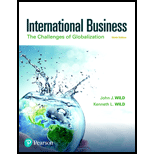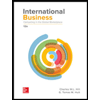
To Determine:
Whether technology is widening the gap among poor and rich countries.
Answer to Problem 1TAI1
Solution:
Yes, technology is widening the gap among poor and rich countries as the technically advanced countries are more skilled than the workers of poor countries.
Given:
Technology and economic development of poor and rich countries
Explanation of Solution
Rich countries are advanced than the poor countries and technology is widening that gap. As technologically advanced countries have more skilled workforce as compared to that of the poor countries.
Also, rich countries have higher percentage of education as they are taking advantage of technology to educate their children better.
Rich countries have highly expansive defense programs, space programs, development programs etc. They are doing businesses in foreign countries as well. On the other hand, the poor countries like nations of Africa, Bhutan, Nepal, Pakistan etc. lack these advantages. As the rich countries are advancing technologically they are leaving behind the poor nations. Rich countries’ currency value is increasing and poor countries’ currency value is decreasing more and more.
Hence, technology is widening the gap among rich and poor countries.
Rich countries workforce is more skilled. They get better education as compared to the poor countries.
Want to see more full solutions like this?
Chapter 4 Solutions
Pearson eText International Business: The Challenges of Globalization -- Instant Access (Pearson+)
- Nonearrow_forwardSuppose that a random sample of 216 twenty-year-old men is selected from a population and that their heights and weights are recorded. A regression of weight on height yields Weight = (-107.3628) + 4.2552 x Height, R2 = 0.875, SER = 11.0160 (2.3220) (0.3348) where Weight is measured in pounds and Height is measured in inches. A man has a late growth spurt and grows 1.6200 inches over the course of a year. Construct a confidence interval of 90% for the person's weight gain. The 90% confidence interval for the person's weight gain is ( ☐ ☐) (in pounds). (Round your responses to two decimal places.)arrow_forwardSuppose that (Y, X) satisfy the assumptions specified here. A random sample of n = 498 is drawn and yields Ŷ= 6.47 + 5.66X, R2 = 0.83, SER = 5.3 (3.7) (3.4) Where the numbers in parentheses are the standard errors of the estimated coefficients B₁ = 6.47 and B₁ = 5.66 respectively. Suppose you wanted to test that B₁ is zero at the 5% level. That is, Ho: B₁ = 0 vs. H₁: B₁ #0 Report the t-statistic and p-value for this test. Definition The t-statistic is (Round your response to two decimal places) ☑ The Least Squares Assumptions Y=Bo+B₁X+u, i = 1,..., n, where 1. The error term u; has conditional mean zero given X;: E (u;|X;) = 0; 2. (Y;, X¡), i = 1,..., n, are independent and identically distributed (i.i.d.) draws from i their joint distribution; and 3. Large outliers are unlikely: X; and Y, have nonzero finite fourth moments.arrow_forward
- Please provide the solution to this general accounting question using proper accounting principles.arrow_forwardI am trying to find the accurate solution to this general accounting problem with appropriate explanations.arrow_forwardI need help finding the accurate solution to this general accounting problem with valid methods.arrow_forward
 BUSN 11 Introduction to Business Student EditionBusinessISBN:9781337407137Author:KellyPublisher:Cengage Learning
BUSN 11 Introduction to Business Student EditionBusinessISBN:9781337407137Author:KellyPublisher:Cengage Learning Essentials of Business Communication (MindTap Cou...BusinessISBN:9781337386494Author:Mary Ellen Guffey, Dana LoewyPublisher:Cengage Learning
Essentials of Business Communication (MindTap Cou...BusinessISBN:9781337386494Author:Mary Ellen Guffey, Dana LoewyPublisher:Cengage Learning Accounting Information Systems (14th Edition)BusinessISBN:9780134474021Author:Marshall B. Romney, Paul J. SteinbartPublisher:PEARSON
Accounting Information Systems (14th Edition)BusinessISBN:9780134474021Author:Marshall B. Romney, Paul J. SteinbartPublisher:PEARSON
 International Business: Competing in the Global M...BusinessISBN:9781259929441Author:Charles W. L. Hill Dr, G. Tomas M. HultPublisher:McGraw-Hill Education
International Business: Competing in the Global M...BusinessISBN:9781259929441Author:Charles W. L. Hill Dr, G. Tomas M. HultPublisher:McGraw-Hill Education





